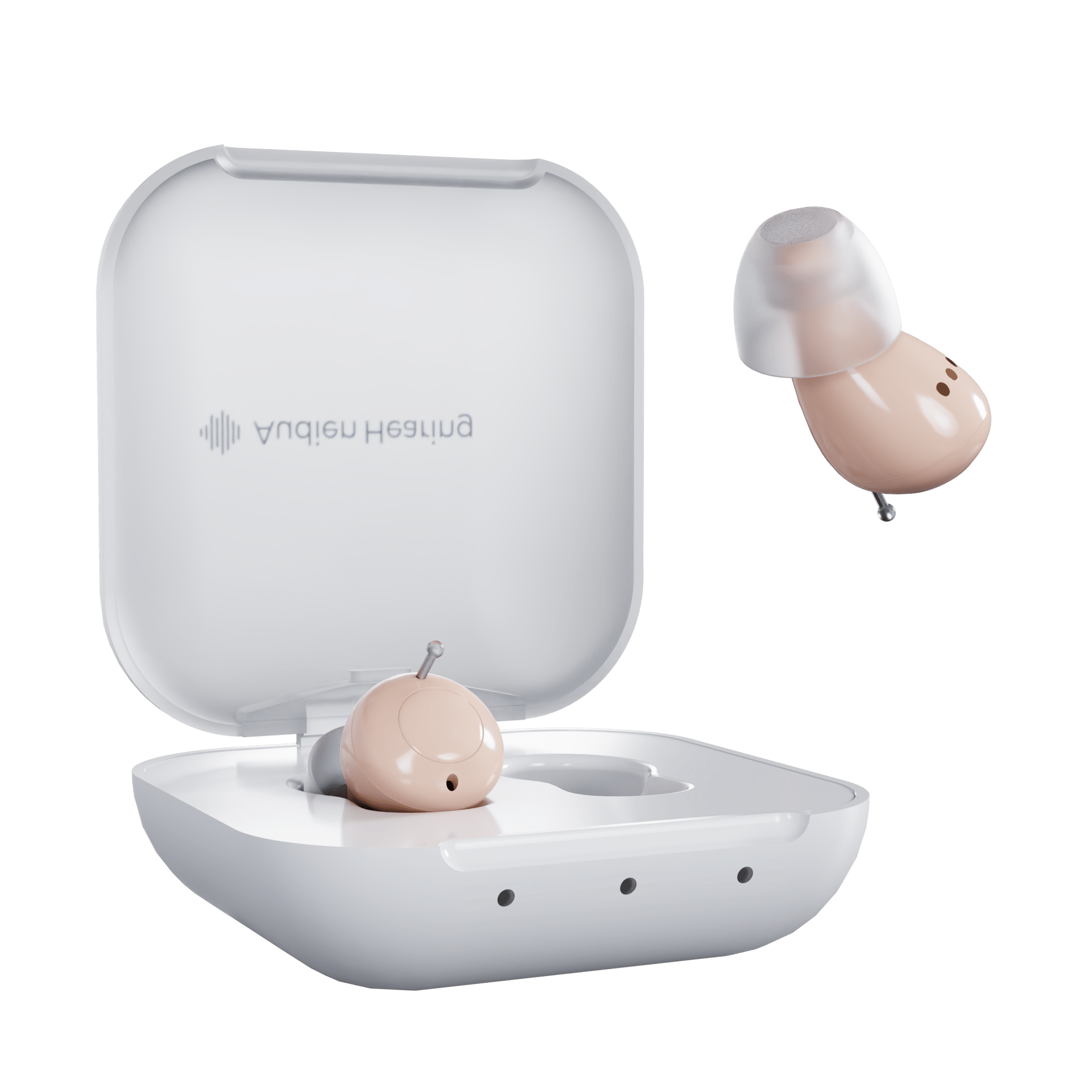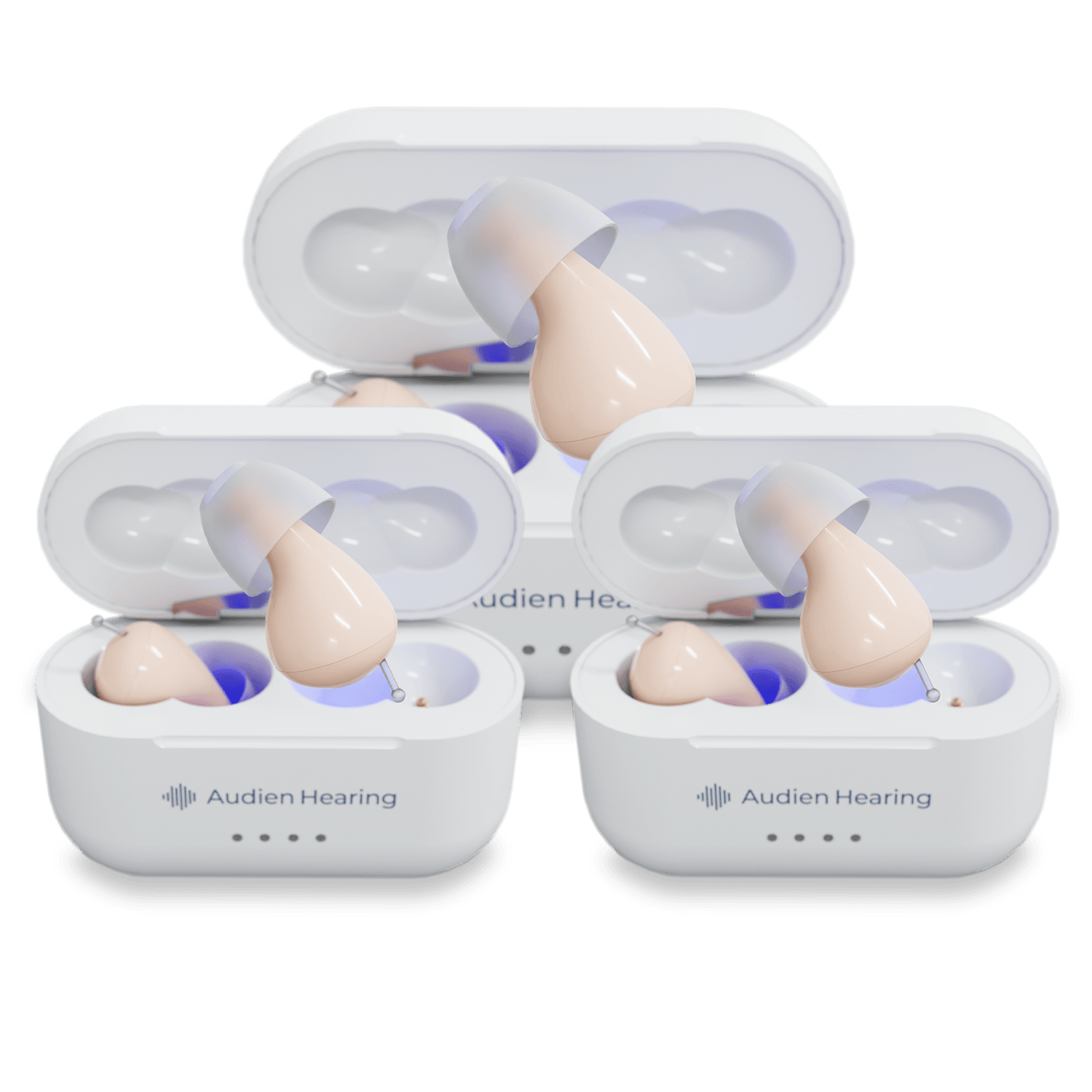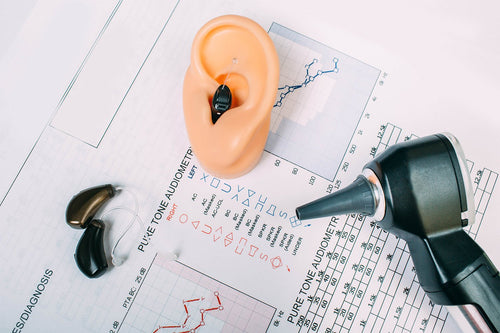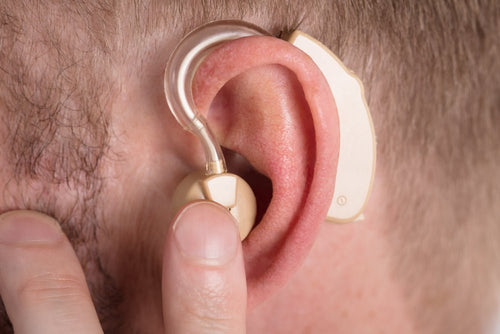Normal hearing is a complex sense that humans have, and from a scientific view, it is one that is quite amazing. Sound is created when an object vibrates or when an object moves quickly. These actions displace the air around it and create sound waves of air pressure. Your ears are able to detect this stimulus which your brain interprets as sound.
The process of hearing is so complex that it has an entire field of medicine dedicated to it known as audiology. An audiologist is a trained professional that is versed in hearing, conditions of the ear, and the general anatomy of the ear.
One of the most useful tests that an audiologist has available to them is audiometry. Audiometry is what most people know as a general hearing test, and while simple, it can provide an immense amount of valuable information when it comes to diagnosing and understanding specific hearing conditions and ailments.
Below is a closer look at audiometry, what it is, when it is performed, as well as everything you need to know about a hearing test.
Audiometry Test

When people think about a hearing test, they most likely think about an audiometry test. Audiometry is the most common diagnostic test utilized in the field of audiology, and for a good reason. Not only is it able to tell if you have hearing loss, but it can show which types of sounds you have trouble hearing.
The first audiometer was invented in 1899 by Carl Seashore. Since then, the device has become a quintessential part of hearing diagnostics, screenings, and an asset to the field of audiology.
Here is more about the specifics when it comes to audiometry and what you can expect.
Audiometer
An audiometry test is conducted utilizing a machine known as an audiometer. This is a special device that allows a clinician to administer sounds at varying intensities through headphones. The device is fairly simple, and the results are typically illustrated nicely on a graph.
How Is an Audiometry Test Conducted?
An audiometry test is typically administered in a quiet or soundproof room. Typically the audiologist will run you through the procedures. This will typically consist of telling you to raise your hand when you hear a sound from the headphone.
You will be asked to put on headphones, and a series of tones at different volumes will be played. The audiologist will record whether or not you were able to hear the tone, and upon the conclusion of the test, they will have a good understanding of your hearing ability and reflexes.
If you hear the sound in only the right ear, raise your right hand. On the flip side, if you only hear the sound in your left ear, raise your left hand.
Keep these key facts in mind:
Sound intensity is measured in decibels (dB). If you can't hear pure tones below 25 dB, you likely have hearing loss. The tone of sound is measured in cycles per second (Hertz/Hz).
Results
Results of an audiometry test, as mentioned before, come in the form of a graph. While this graph makes complete sense to the audiologist, it is likely to be a little confusing to the untrained eye.
Typically a result graph will have two lines that represent each ear's hearing ability. The x-axis of the graph is typically the frequency of the sounds played, which are more commonly referred to as tones.
The y-axis of the graph tends to be in decibels which is a measure of sound loudness. The lines represent your hearing threshold for each ear. Anything above the line is outside of your hearing threshold; everything below the line is within your hearing threshold.
- Mild hearing loss is at 41 to 55 dB
- Moderate hearing loss is around 56 to 70 dB
- Severe hearing loss is 71 to 90 dB
- Profound hearing loss (deafness) is over 90dB
When Is it Performed?
Because an audiometry exam is easily performed and non-invasive, it is typically done during every audiologist visit. This then begs the question of how frequently you should be going to the audiologist for a hearing evaluation.
Here is a detailed look at the current recommendations based upon your age group:
Childhood
While you wouldn’t expect children to need a hearing test, the fact is that there are many delayed hearing conditions that can show up in early childhood. Conditions such as auditory neuropathy, frequent middle ear infections, and developmental issues of the ear can all impact children.
Hearing issues can be immensely difficult on children since they are in a stage of life where they are developing and learning at an incredible pace. Having undiagnosed hearing loss as a child could lead to classroom difficulties and potential problems with speech.
Children are often tested with a speech discrimination test or word recognition test. For much younger children, your provider may want to use a play audiometry or visual reinforcement audiometry, often using toys.
One aspect of audiometry that has emerged in the last few decades is the use of audiometry screenings at schools. With these screenings, the aim is to catch these childhood hearing issues early and provide them with a treatment that can restore their hearing and get them back to where they need to be.
School-age children should get a hearing test every couple of years. This ensures their hearing is in good shape and that there are no trends that may indicate a potential hearing problem.
Adulthood
Once you enter adulthood, it can be easy to forget about routine medical visits, but they are vital in providing timely care. This mainly includes your yearly physical, but you should also make an effort to get routine auditory exams.
According to the American Speech-Hearing Association, even if you don’t suspect any hearing issue, you should try to get a hearing test done at least every ten years up until you are about 50 years old. These routine visits can help to identify any decline in hearing and provide you timely treatment, such as recommendations to utilize hearing aids or decrease your exposure to loud noise.
Elderly
For those over the age of 50, the recommendation changes from every decade to every few years. The main reason for this is that the incidence of hearing loss increases as you get older. This can come as the result of noise exposures throughout the years, an increased chance of earwax buildup, or even age itself.
Retaining hearing later in life is an important component to having a good quality of life. iI can help to reduce social isolation, allow for effective communication, and allow for other enriching experiences that are beneficial for emotional and mental wellbeing.
Hearing Aids

The main purpose of an audiometry test is to assess your hearing capabilities. Hearing assistive devices may be offered when hearing abilities fall below the threshold that they should be.
The most common device that is utilized to treat hearing loss are hearing aids. Hearing aids essentially act as an amplifier that takes sounds below your hearing threshold and boosts the volume to an intensity that you are able to hear.
Even though hearing aids are utilized by millions of people across the globe, they still tend to cost an arm and a leg. Read on for a closer look at Audien hearing aids and what makes them one of the best options when it comes to hearing aids.
Audien vs. the Rest of the Competition
The hearing aid marketplace is quite vast. It is full of many overpriced options that are nearly unattainable to the average individual or options that are cheap but lacking in terms of usability.
Tack on the fact that many individuals looking for hearing aids are on a fixed income like social security, it is easy to see the problem that exists in the world of hearing aids.
Audien is a hearing aid company that challenges these norms and provides top-quality hearing aids at a very approachable cost. Take the EV1 as a prime example.
The EV1 is a sub-one hundred dollar hearing aid that is full of features like amplifying speech, reducing background noise, an in-ear design, and rechargeable batteries. If you were to look elsewhere, a similarly specced hearing aid would cost you much more.
Audien also cares about your satisfaction, and that is why we offer a 45-day return window to allow you to adjust to them and ensure you are completely satisfied. Overall, Audien is changing the industry for the better and making high-quality hearing aids more accessible.
The First Step
An audiometry test is a test that is utilized by an audiologist to determine your hearing ability. The test can tell an audiologist which ear is affected, which sounds you have trouble hearing, as well as your specific degree of hearing loss.
An audiometry test is a standard part of nearly any audiologist’s visit since it is easy and unobtrusive. For children and individuals over 50, the current recommendation is to get a hearing test every few years. For adults under the age of 50, the recommendation is to get one done at least every decade.
Sources
CARL EMIL SEASHORE | National Academy of Science













